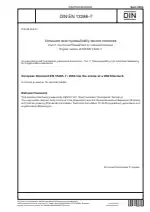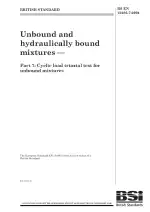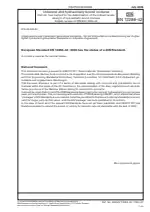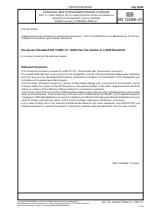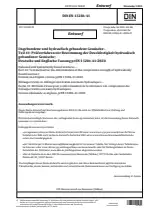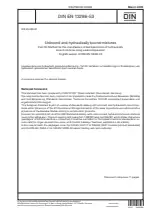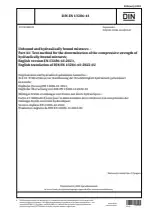Unbound and Hydraulically Bound Mixtures - Part 7: Cyclic Load Triaxial Test for Unbound Mixtures
Also Known As:
The DIN EN 13286-7 standard outlines the procedures for conducting tests to determine the resilient and permanent behavior of unbound mixtures. The purpose of these tests is to simulate the physical conditions and stress states that these materials experience when subjected to moving loads in pavement layers.
The standard specifies that the test is applicable to cylindrical specimens of unbound mixtures, which are prepared through laboratory compaction. These specimens should have an absolute maximum particle size that is smaller than one fifth of the specimen diameter.
Two methods are provided for loading the specimen: Method A and Method B. In Method A, known as the Variable Confining Pressure method, the cell pressure is cycled in phase with the axial load. Method B, known as the Constant Confining Pressure method, only involves cyclic axial loading and constant confining pressure.
By conducting these tests and determining the mechanical properties of the unbound mixtures, this standard allows for the performance ranking of materials and calculation of the structural responses of pavement structures.
| Descriptors | Bound, Building materials, Collecting sample, Conglomerates, Construction, Construction materials, Definitions, Determination, Elastic properties (fluids), Form changes, Grain sizing, Hydraulic, Laboratory testing, Mineral aggregates, Mixtures, Modulus of elasticity, Particulate materials, Pavements (roads), Road construction, Rocks, Sample division, Samples, Sampling methods, Shear modulus, Specification (approval), Specimen preparation, Test cycles, Testing, Testing conditions, Triaxial tests, Sample preparation |
| ICS Codes | 93.080.20 - Road construction materials |
| Language(s) | English |
| File Size | 2.7 MB |

